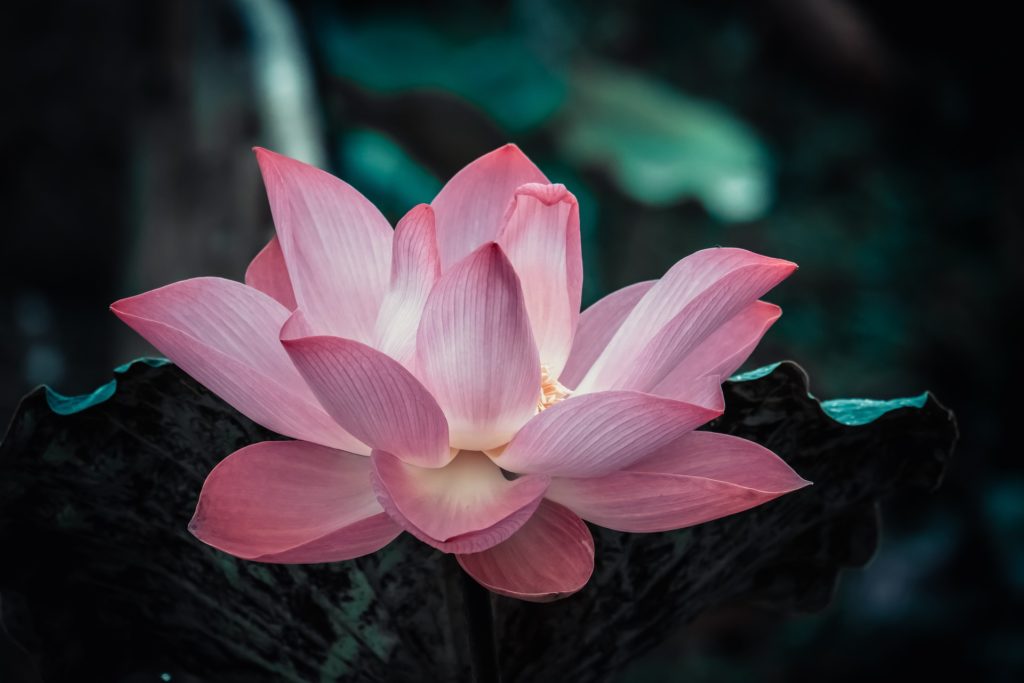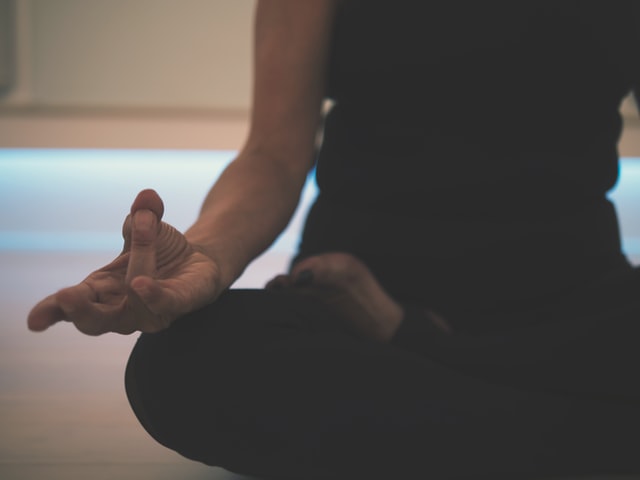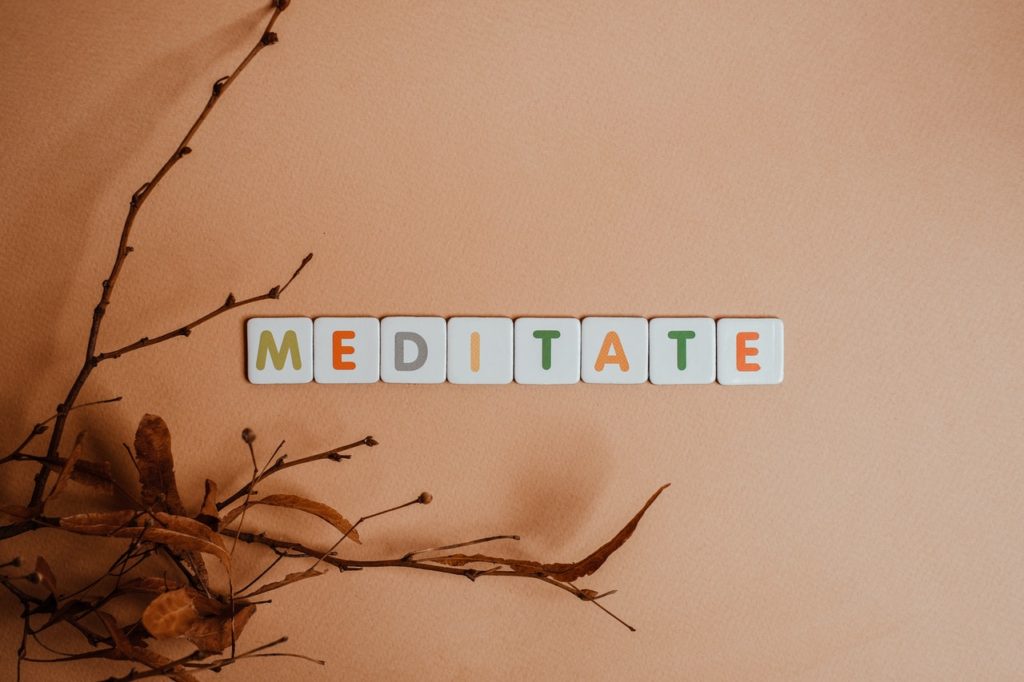I’m excited to welcome Cat O’Brien to the blog today. Cat is a mindful copywriter & content marketing strategist. She’s a meditator who puts the values of Vipassana meditation at the center of her personal life and her business. Not sure what Vipassana is? Cat’s here to teach us all about it…
Vipassana Meditation: Silence, Suffering, and Finding Peace
When was the last time you went 6 hours without speaking?
What about 12 hours? (Yes… talking to yourself when you’re alone DOES count!)
… A full 24 hour day?
A couple of years ago, I went 10 full days without speaking.
Besides staying silent, I also avoided eye contact, didn’t exercise, didn’t use technology, didn’t listen to music, or even write in my journal.
It was ten days of ME time. Me inside my own head with no way to get out.
Mostly, it was torture.
This unique form of self-inflicted pain is called Vipassana meditation.
Now stick with me here — Vipassana meditation is not actually torture. In fact, practicing Vipassana meditation is one of the KINDEST things you can do for yourself.
But I signed up for a ten-day Vipassana meditation retreat having zero experience meditating (you could say I got in wayyy over my head).
And now that I’ve survived, I’m here to tell my tale. And I’m here to tell you that the Vipassana meditation retreat changed the way I experience life every day.
I’m not being hyperbolic either.
Stick around and I’ll tell you all about
- what makes Vipassana unique
- how you can practice Vipassana
- and why suffering through a ten-day retreat has led to more peace and joy in my life

Meditating as a Novice
Have I introduced myself? I’m Cat O’Brien — an ex-high school English teacher, a mindful copywriter, online entrepreneur, and (most importantly for this blog post) a meditator.
I turned to meditation out of curiosity and a desire to access happiness easier (it turns out that meditating isn’t about being happier… but more on that later)
Today, I’m going to talk to you about Vipassana meditation and the 10-day retreat that kicked off my entire meditation journey.
So if you’re…
- Curious about meditation
- Keen to know what Vipassana meditation is all about
- Or want to learn more about silent meditation retreats
… then keep reading.
(Or, if you’re ready to dive into meditation with the support of a personalized, one-on-one meditation session, get in touch with Monica now.)
What Makes Vipassana Meditation Unique
At its core, meditation is the practice of training our minds to behave in ways that bring us greater well-being.
Vipassana meditation, which we’re focusing on today, is believed to be the O.G. meditation passed down from the Buddha himself. It’s the practice of observing sensations in the body to better understand how our mind works.
It seems incredibly simple. And it is…
Except that our minds rarely want to behave.
So Vipassana meditation becomes the practice of repeatedly bringing our attention back to *this moment.* Doing so helps us live in the present and is crucial for our well-being (keep reading to learn why it’s so important).

How to Meditate According to the Vipassana Practice
Vipassana meditation is both challenging and frustratingly simple.
The basic principles are as follows:
- Carve out a chunk of time (consider 15 minutes if you’re a beginner) and find a quiet place to sit.
- Sit on the ground cross-legged. You can put a pillow under your butt to lift your pelvis and take some of the pressure off of your lower back. If you have a bad back, you can also sit upright in a sturdy chair.
- Set a timer (or find a guided meditation here).
- Sit up straight, close your eyes, and begin to observe your breath. Observe the sensations that your breath causes on your upper lip. Watch those sensations as they rise and fall.
Done! Congratulations — you are now a Vipassana meditator.
Really, I mean it!
… kind of anyway.
Meditating With a Wandering Mind
If you follow steps 1-4 every day, you’ll start to gain insight into yourself.
You’ll notice that almost every time your mind wanders away from your breath, you’re thinking about past memories or future daydreams.
And if your daydreams are about pleasant things, you feel good and start to crave more of that good feeling. You want to stay in that pleasant past or hopeful future.
Or, if your daydreams are about unpleasant things, you feel agitated and try to avoid those feelings.
Without realizing it, you can spend your entire meditation session (or the entire day!) oscillating between feeling desire and aversion, craving and agitation.
You’re left with no time to feel content with the present moment.
The goal of Vipassana meditation is to help you slow down, bring your mind back to *this moment,* and access greater peace (more on the wandering mind here).
Sounds like a healthy practice right?
I definitely think so. But I’m also here to tell you that thanks to my wandering mind, meditating can be INFURIATING.
Ok… I’m supposed to focus on my breath.
But my mind just wandered and now I’m frustrated with myself for not focusing.
But I’m not supposed to feel frustrated… it goes against the practice.
And now I feel defeated because my mind isn’t supposed to wander and I’m not supposed to feel frustrated but both are happening and I’m STILL thinking about this instead of focusing on my breath.
And on… and on… and on…
Needless to say, it’s good to practice with the support of other meditators. Or at least with a recorded guide.

My 10-Day Vipassana Meditation Retreat
I first heard about the ten-day Vipassana meditation retreats from a friend. HE had just heard about it from one of his friends, and we both agreed that it sounded *cool.*
That was the extent of my knowledge of what I was getting myself into.
So I was surprised when I arrived at the Vipassana meditation retreat, and I was asked to agree to the Code of Discipline.
It’s an agreement
- “to abstain from killing any being; [including mosquitos!]
- to abstain from stealing;
- to abstain from all sexual activity;
- to abstain from telling lies;
- to abstain from all intoxicants.”
It also includes abstaining from:
- Big meals (feeling full isn’t conducive for meditating)
- Eye contact
- Physical contact with other people
- Physical exercise
- Religious objects (including Buddhist ones)
- Music, reading, writing
Mingling with the opposite sex (we had separate eating, sleeping, and meditation spaces)
And of course, it is required to observe the Noble Silence — “silence of body, speech, and mind. Any form of communication with fellow student, whether by gestures, sign language, written notes, etc., is prohibited.”
It was the most ME time I’ve EVER experienced.
The day started with a 4:00 AM wake-up, and the first meditation session began at 4:30 AM. Each day we clocked 10 hours and 15 minutes of meditating (split up into 1-2 hour sessions). The rest of the waking hours were spent at meals or in Q&A sessions with our teacher.
The Hardest Part of My Vipassana Meditation Retreat
My Vipassana meditation retreat was HARD.
The self-discipline that was required to make it through all ten days was a practice in patience and strength.
Don’t get me wrong — the struggle is 100% WORTH IT. But it doesn’t come without discipline and commitment.
The hardest parts of the Vipassana meditation retreat were also where I experienced the most growth. So an alternative title for this section could be The 3 Most Important Lessons I Learned.
My top three areas of growth (A.K.A. the parts that almost broke me):
1. Internalizing the Buddhist tenant of non-attachment.
The idea of non-attachment is that everything in life is impermanent. So to ease our suffering, we can’t get too attached to anyone or anything.
This is wonderful for bad things like a bad mood, a bad haircut, or a bad bout of acne.
But what about the good stuff?
To practice non-attachment, we have to apply it to everything in our life. And I struggled to do this with my relationships.
I argued (inside my head of course) that I’d rather be deeply attached to my family and friends knowing that it means I’ll suffer more when I lose them.
It turns out that I wasn’t the only participant struggling with this. During the Q & A with our teacher, we learned that Vipassana and Buddhism don’t ask you to avoid loving deeply.
In fact, you should love deeply. Love is a great joy. And the goal is not to avoid joy.
Instead, the goal is to love people and things in your life WHILE ALSO recognizing that the person (and the joy that comes from them) will not be around forever.
This still feels hard for me. But I work on deepening my understanding of this practice daily.
2. The lack of mental or physical exercise outside of meditating.
I’m a big writer (surprise surprise). I’m also a big runner. So going ten days without either was very challenging for me.
Plus — the 10 days during the Vipassana meditation retreat were VERY emotional. I longed for the escape of physical exercise and processing my feeling through writing.
Without these two escapes, I was forced to face my emotions and process them internally.
For many of us, this might not be the most productive approach. And Vipassana is not meant to replace therapy or other forms of emotional support. It was, however, a new experience for me and I feel better equipped now to process my emotions.
Some Vipassana meditation retreats incorporate yoga into their daily routine. Mine was not one of those retreats, but I’d guess that yoga would have helped me feel less pent-up.
3. Spending 10 precious days of my life sitting with my eyes closed (AKA wasting my time)
This was another big one for me.
Even during the highs of the retreat, I couldn’t help but feel unproductive.
What am I doing here?
Why does the retreat have to be SO long?
I could be… working on my business… making more money… learning how to make pasta… ANYTHING where I’d have something to SHOW for my time.
It was a hard lesson in *being* over *doing.*
And a lesson in patience while working on myself.
Because I do believe that it was time well spent. And I believe that if every person went to a 10 day Vipassana meditation retreat, the world would be a more peaceful and better place.
But we have to be willing to dedicate ten days to be with ourselves (which means giving up those days doing something else).

Resources for Vipassana Meditation
There’s no doubt that Vipassana meditation has changed the way that I experience life.
I believe that I am less reactive, more content, and more peaceful because of it.
If you’re interested in Vipassana, I encourage you to look for a local sitting group in your area. Google [Vipassana meditation sitting group] + [your location.]
You can access many free dharma recordings here (guided meditations and talks on the Buddha’s teachings).
And you can find a Vipassana meditation retreat near you here.
Reiki Healing Meditations
Now with all that said, Vipassana is only one type of meditation. I’m a big proponent of trying out many different kinds of meditation to see what works best for you.
Plus, the beauty of meditation is how versatile and personalized it can be. That’s why Monica offers a personalized Reiki healing meditation — it combines the benefits of meditation AND Reiki healing energy.
Her sessions are perfect for you if you’re curious about how Reiki and meditation can work together to support your well-being.
Book a Reiki session here or learn how to incorporate a spiritual practice into your daily routine by getting Reiki Level 1 certified. Fill out the form on the bottom of the page here.
